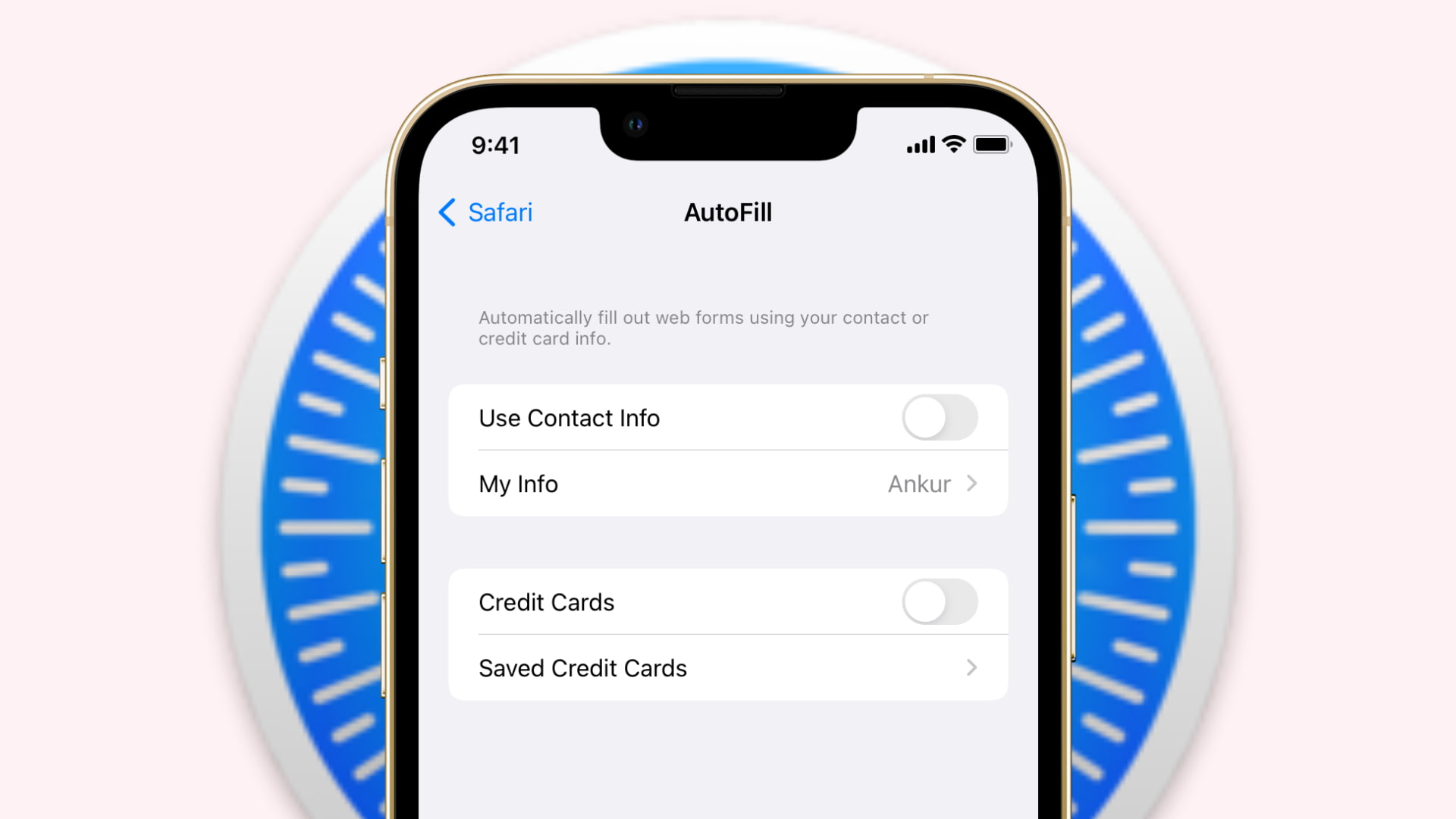Introduction
Safari, Apple's widely-used web browser, offers a seamless and intuitive browsing experience. However, like many other browsers, Safari is not immune to the intrusion of ads that can disrupt your online activities. These ads, ranging from pop-ups to banner ads, can be intrusive and distracting, impacting your browsing experience. Fortunately, there are effective methods to mitigate these interruptions and enjoy a more streamlined browsing experience.
In this comprehensive guide, we will delve into the various strategies and tools available to stop ads in Safari. Whether you are using Safari on your Mac, iPhone, or iPad, these techniques can help you regain control over your browsing experience. From understanding the nature of Safari ads to utilizing content blockers and managing website data, we will explore practical solutions to minimize or eliminate unwanted advertisements.
By implementing the strategies outlined in this guide, you can reclaim the tranquility of your browsing sessions and focus on the content that matters most to you. Let's embark on this journey to enhance your Safari browsing experience by mitigating the impact of intrusive ads.
Understanding Safari Ads
Safari, known for its user-friendly interface and robust privacy features, is a popular choice for many Apple device users. However, despite its strengths, Safari is not immune to the presence of ads that can disrupt the browsing experience. These ads come in various forms, including pop-ups, banner ads, and autoplay videos, and they often appear when visiting websites or using web applications.
Pop-up ads are particularly intrusive, as they can unexpectedly cover the content you are trying to access, leading to frustration and annoyance. Banner ads, on the other hand, can clutter the interface and distract you from the main content of the webpage. Additionally, autoplay videos can disrupt your browsing session by playing audio and video content without your consent.
These ads are often delivered through ad networks and tracking scripts embedded in websites. Advertisers use these methods to target specific demographics and user interests, but the result can be a less-than-ideal browsing experience for the end user.
Understanding the nature of these ads is crucial in devising effective strategies to mitigate their impact. By recognizing the different forms of ads and how they manifest in Safari, users can take proactive steps to regain control over their browsing experience. From utilizing content blockers to managing website data, there are various approaches to address the presence of ads in Safari and create a more seamless and enjoyable browsing environment.
By gaining insight into the mechanisms behind Safari ads, users can make informed decisions about the tools and techniques that best suit their preferences and browsing habits. This understanding forms the foundation for implementing targeted solutions to minimize or eliminate the intrusion of unwanted advertisements, ultimately enhancing the overall Safari browsing experience.
Using Content Blockers
Content blockers, also known as ad blockers, are powerful tools that can significantly reduce the presence of ads while browsing in Safari. These blockers work by preventing the loading of specific types of content, such as advertisements, tracking scripts, and other elements that contribute to a cluttered and intrusive browsing experience.
Installing Content Blockers
To utilize content blockers in Safari, users can easily install them from the App Store on their iOS devices or the Mac App Store on their Mac computers. Once installed, these blockers can be accessed and configured through the Safari settings, allowing users to customize their browsing experience according to their preferences.
Customizing Block Lists
Content blockers often provide options to customize block lists, enabling users to specify the types of content they wish to block. This level of customization empowers users to tailor their browsing environment, ensuring that they can enjoy a cleaner and more streamlined experience while visiting their favorite websites.
Enhanced Privacy and Security
In addition to reducing the presence of ads, content blockers can enhance privacy and security while browsing in Safari. By blocking tracking scripts and other potentially harmful content, these blockers contribute to a more secure online experience, safeguarding user data and mitigating the risks associated with intrusive advertising practices.
Improved Page Loading Speed
One notable benefit of using content blockers is the potential improvement in page loading speed. By preventing the loading of numerous ads and tracking scripts, content blockers can contribute to faster loading times, allowing users to access content more efficiently and without the delays often associated with ad-heavy websites.
Seamless Integration with Safari
Content blockers seamlessly integrate with Safari, providing a user-friendly and intuitive browsing experience. Once configured, these blockers operate in the background, effectively reducing the presence of ads without requiring constant user intervention, allowing for a more enjoyable and uninterrupted browsing experience.
By leveraging the capabilities of content blockers, Safari users can take proactive steps to minimize the intrusion of ads and create a more personalized and enjoyable browsing environment. With the ability to customize block lists, enhance privacy and security, and improve page loading speed, content blockers offer a comprehensive solution to mitigate the impact of unwanted advertisements, empowering users to reclaim control over their Safari browsing experience.
Disabling Pop-ups
Pop-up ads can be one of the most intrusive forms of advertising, often disrupting the browsing experience and overshadowing the content users intend to access. In Safari, users have the option to disable pop-ups, effectively preventing these intrusive windows from appearing during their browsing sessions.
Configuring Safari Settings
To disable pop-ups in Safari, users can access the browser's settings and make adjustments to the pop-up behavior. On Mac computers, this can be done by opening Safari, clicking on "Safari" in the menu bar, selecting "Preferences," and then navigating to the "Websites" tab. From there, users can choose "Pop-up Windows" on the left-hand side and adjust the settings to block pop-ups entirely or allow them on a per-website basis.
On iOS devices, users can achieve similar results by accessing the "Settings" app, scrolling down to "Safari," and selecting "Pop-ups & New Windows." From this menu, users can toggle the switch to block pop-ups, providing a more seamless and uninterrupted browsing experience on their iPhone or iPad.
Preventing Unwanted Distractions
By disabling pop-ups in Safari, users can prevent unwanted distractions and maintain focus on the content they wish to explore. This not only contributes to a more enjoyable browsing experience but also reduces the likelihood of inadvertently clicking on misleading or potentially harmful pop-up ads.
Enhancing User Control
Disabling pop-ups empowers users with greater control over their browsing environment, allowing them to navigate websites without the interruption of intrusive windows. This level of control fosters a more user-centric and personalized browsing experience, aligning with the preferences and priorities of individual users.
Streamlining the Browsing Experience
With pop-ups disabled, Safari users can enjoy a more streamlined and efficient browsing experience, free from the disruptions caused by intrusive advertising tactics. This contributes to a more positive and user-friendly interaction with websites and web applications, ultimately enhancing the overall satisfaction derived from using Safari as a primary browsing platform.
By taking advantage of the option to disable pop-ups in Safari, users can proactively mitigate the impact of these intrusive advertising elements, creating a more tranquil and focused browsing environment that aligns with their preferences and priorities.
Managing Website Data
Managing website data in Safari is a proactive approach to controlling the information stored by websites you visit. This data includes cookies, cache files, and browsing history, which can be utilized by websites to deliver targeted ads and personalized content. By managing website data, users can exert greater control over their online privacy and reduce the impact of targeted advertising.
Clearing Browsing Data
Safari provides users with the option to clear browsing data, including cookies and cache files, from specific time periods. By regularly clearing this data, users can prevent websites from tracking their browsing behavior and using the collected information for targeted advertising purposes. This not only enhances privacy but also reduces the likelihood of encountering personalized ads based on previous online activities.
Managing Website Permissions
In Safari, users can manage website permissions to control how websites access their location, camera, microphone, and other sensitive data. By reviewing and adjusting these permissions, users can limit the information websites can gather, thereby minimizing the potential for targeted ads based on location or device-specific data. This proactive approach empowers users to maintain a higher level of privacy while browsing in Safari.
Utilizing Private Browsing Mode
Safari offers a Private Browsing mode that prevents the browser from storing browsing history, cookies, and other site data. When browsing in this mode, Safari does not retain information about the websites visited, providing a more discreet and privacy-focused browsing experience. By utilizing Private Browsing mode, users can limit the accumulation of data that could be used for targeted advertising purposes.
Customizing Website Data Settings
Safari allows users to customize website data settings on a per-site basis, providing granular control over the information stored by individual websites. By accessing the Safari settings, users can view and manage the data stored by specific websites, including cookies, cache, and local storage. This level of customization enables users to tailor their privacy preferences for each site they visit, reducing the impact of targeted advertising across different web destinations.
By actively managing website data in Safari, users can mitigate the impact of targeted advertising and maintain a higher degree of privacy while browsing the web. These proactive measures empower users to control the information collected by websites, ultimately contributing to a more personalized and privacy-conscious browsing experience in Safari.
Conclusion
In conclusion, Safari users have access to a range of effective strategies and tools to mitigate the impact of intrusive ads and create a more personalized and enjoyable browsing experience. By understanding the nature of Safari ads and recognizing the various forms they can take, users can make informed decisions about implementing targeted solutions to minimize or eliminate unwanted advertisements.
The utilization of content blockers stands out as a powerful method to reduce the presence of ads while browsing in Safari. These blockers not only offer customizable block lists but also contribute to enhanced privacy, improved page loading speed, and seamless integration with the Safari browser. By leveraging the capabilities of content blockers, users can reclaim control over their browsing experience and enjoy a cleaner and more streamlined environment.
Disabling pop-ups in Safari is another effective approach to prevent intrusive advertising tactics from disrupting the browsing experience. By configuring Safari settings to block pop-ups, users can maintain focus on the content they wish to explore, enhance user control, and streamline their overall browsing experience. This proactive measure empowers users to navigate websites without the interruption of intrusive windows, aligning with their preferences and priorities.
Furthermore, actively managing website data in Safari enables users to exert greater control over their online privacy and reduce the impact of targeted advertising. By clearing browsing data, managing website permissions, utilizing Private Browsing mode, and customizing website data settings, users can limit the accumulation of data that could be used for targeted advertising purposes, ultimately contributing to a more personalized and privacy-conscious browsing experience.
Incorporating these strategies into the Safari browsing experience empowers users to proactively address the presence of ads and create a more tranquil and focused environment. Whether on Mac, iPhone, or iPad, implementing these solutions can significantly enhance the overall satisfaction derived from using Safari as a primary browsing platform.
By leveraging the insights and techniques outlined in this guide, Safari users can embark on a journey to enhance their browsing experience, minimize the intrusion of unwanted advertisements, and enjoy a more personalized and privacy-conscious interaction with the web.

























